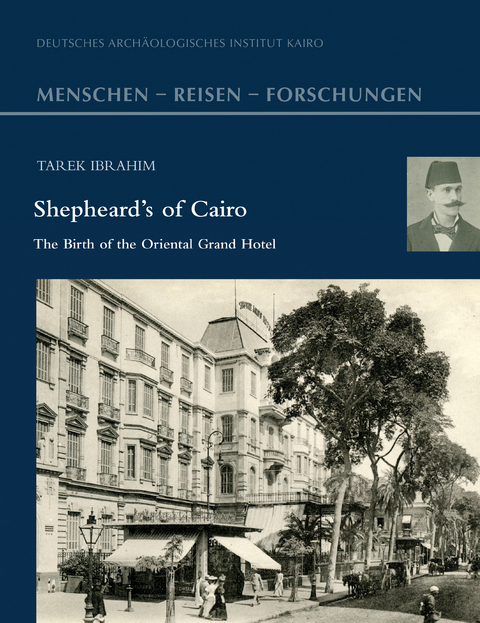
Shepheard’s of Cairo
Reichert, L (Verlag)
978-3-95490-368-9 (ISBN)
Few buildings reflect the waxing and waning of European influence in Egypt during the 19th and 20th centuries as profoundly as Shepheard's Hotel in Cairo. Prior to its total destruction during the infamous "Black Saturday" riots of January 1952, the building was a potent symbol of the problematic relationship between native and foreigner, Orient and Occident, colonized and colonizer. Initially the site of Napoleon's headquarters during his ill-fated Egyptian campaign, over the following 150 years, successive expansions and reconstructions transformed the humble lodge into one of the most glamorous and legendary hotels in the world. Hardly a single important political, social or artistic figure that passed through Cairo failed to stay and make an appearance at the hotel.
Until recently, a scholarly analysis and documentation on the architecture of Shepheard's Hotel has been cursory at best due the near total absence of primary visual material. Thanks to a spectacular discovery at Grünsberg Castle near Nuremberg, Germany, primary visual material of the building - including original floor plans, correspondence, sketches and photographs - has come to light. The design of the hotel can now be correctly attributed to the previously unknown German architect Johann Adam Rennebaum (1858-1937) who lived and worked in Egypt for more than 50 years. This cache, combined with material from numerous archives in Egypt, Europe and North America, allows for the first comprehensive survey on the art, architecture and design of the legendary lost hotel.
More than merely lodging, Shepheard's made design a destination and allowed visitors to step through the looking glass into a fantastic recreation of the wonders along the banks of the Nile, quickly becoming an essential part of the grand tour in Egypt for well-heeled travelers of the late 19th and early 20th centuries.
Tarek Ibrahim (born 1978) received his BA in art history from New York University in 2000 and his M Arch at Columbia University and Parsons the New School for Design in 2008. He moved to Berlin shortly thereafter, where he worked for several years as a practicing architect, most notably at the firm of Sauerbruch Hutton, before returning to academia in 2012. He received his Master's in art and architectural history from the Humboldt University of Berlin in 2016. Mr. Ibrahim is currently a research associate in the Department for Strategy, Coordination and International Affairs of the Humboldt Forum in the Berlin Palace, the largest cultural project in Berlin, opening at the end of 2020. In addition, he is writing his PhD on the life and work of the German architect Johann Adam Rennebaum as a mirror of - and a window onto - the German expatriate community in Egypt around 1900.
| Erscheinungsdatum | 14.12.2019 |
|---|---|
| Reihe/Serie | Menschen – Reisen – Forschungen ; 5 |
| Verlagsort | Wiesbaden |
| Sprache | englisch |
| Maße | 210 x 270 mm |
| Gewicht | 698 g |
| Themenwelt | Sachbuch/Ratgeber ► Geschichte / Politik |
| Reisen ► Reiseberichte ► Naher Osten | |
| Geisteswissenschaften ► Archäologie | |
| Geschichte ► Teilgebiete der Geschichte ► Kulturgeschichte | |
| Schlagworte | Ägypten • Ägypter • Ägyptisch • Hotel • MRF • Oriental Grand Hotel |
| ISBN-10 | 3-95490-368-7 / 3954903687 |
| ISBN-13 | 978-3-95490-368-9 / 9783954903689 |
| Zustand | Neuware |
| Haben Sie eine Frage zum Produkt? |
aus dem Bereich


